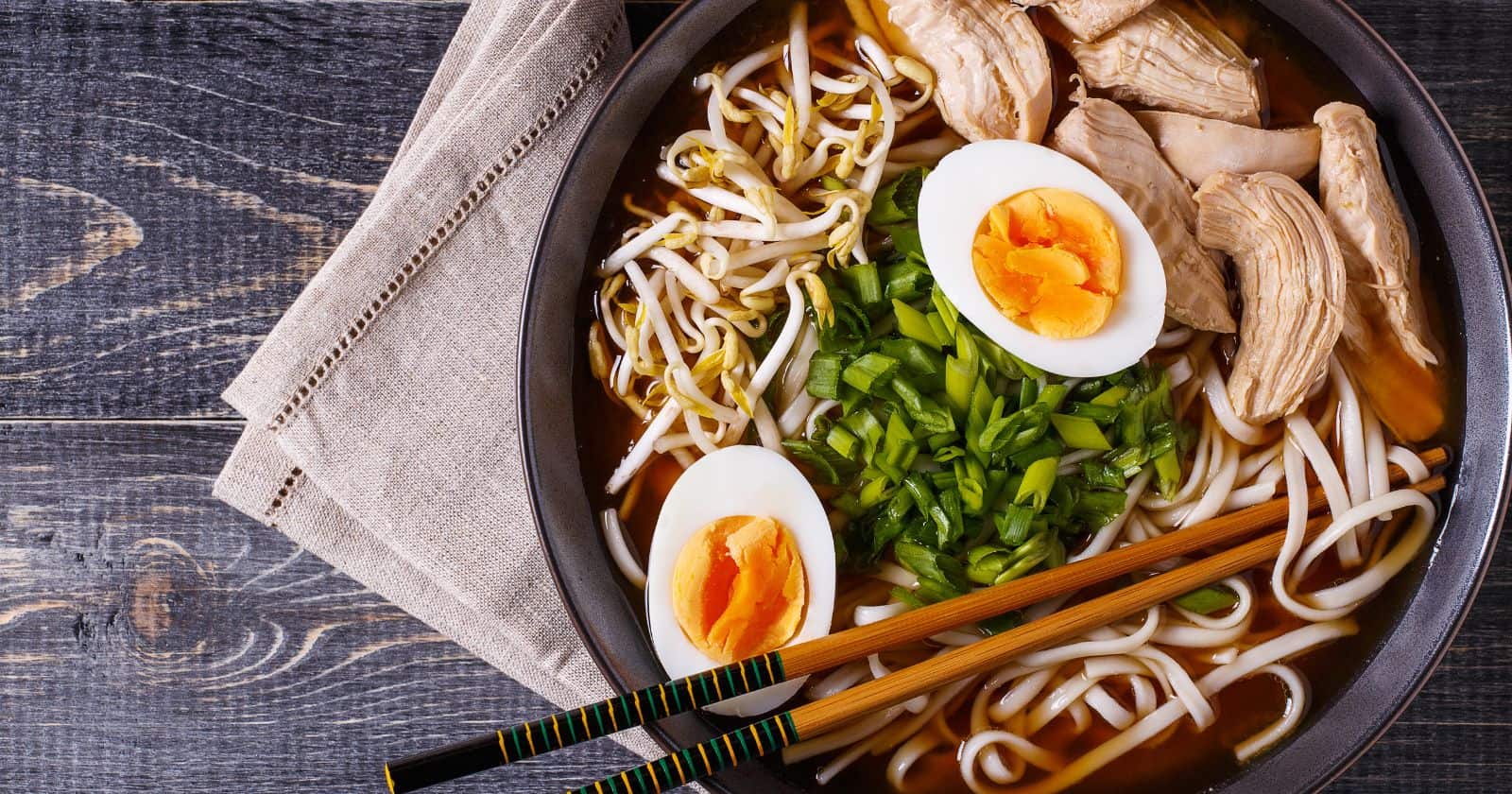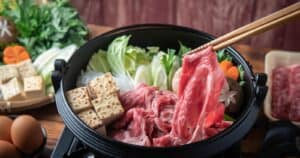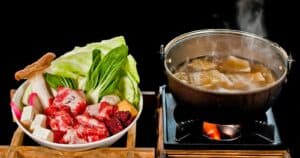You’re hungry and craving a comforting, brothy Asian dish. Both hot pot and ramen seem like tasty options. But what exactly sets these two popular noodle soups apart? With broth as the star, noodles as the base, and Asian influences, the similarities confuse many home cooks.
The main distinction is in the cooking method. Hot pot features uncooked ingredients like fresh noodles or thinly sliced meat that you simmer at the table in a flavorful broth. Ramen consists of pre-cooked noodles served in rich, savory broth with toppings.
Hot pot is all about the interactive, do-it-yourself cooking experience. You dip ingredients into simmering broth to quickly cook tableside based on your preferences. Ramen offers the satisfaction of noodles soaked in complex flavors and slurped with toppings like pork or soft-boiled eggs.
While both provide a mouthwatering broth-based meal, understanding the nuances between hot pot vs. ramen will help you decide which dish best satisfies your craving. Keep reading for an in-depth comparison of ingredients, flavors, and techniques so you can tell the difference between these Asian noodle soups.
Cooking Methods
The cooking technique is where hot pot and ramen diverge most:
Hot Pot Cooking
- Ingredients cooked tableside in simmering broth
- Very short cook times
- Customizable, interactive experience
- Broth stays hot for adding ingredients
- Constant dipping and swirling motion
Ramen Cooking
- Noodles and toppings pre-cooked then assembled in bowl
- Longer prep time but quick to serve
- Broth cooked in batches separately
- Less hands-on once served
- Simply add toppings and slurp
Hot pot requires cooking raw ingredients in broth on the spot. Ramen involves combining pre-cooked components into the final soup.
Ingredients
The ingredients also differ significantly between the two:
Hot Pot Ingredients
- Raw proteins and vegetables
- Fresh noodles like rice noodles or udon
- Very thin slices cook quickly
- Flavorful broths
- Sauces and condiments for dipping
Ramen Ingredients
- Precooked noodles like ramen or udon
- Cooked sliced proteins
- Seasoned broth like tonkotsu, miso or shoyu
- Toppings like nori, eggs, scallions
- Tare sauce for seasoning
Ramen uses more prepped toppings and seasonings. Hot pot centers on fresh, raw ingredients cooked in broth.
Flavor Profiles
Each noodle soup also has distinct flavor characteristics:
Hot Pot Flavors
- Light, clear broths like chicken, tomato, or dashi
- Aromatic stocks infuse flavors
- Ingredients retain individual flavors
- Customize taste with dipping sauces
Ramen Flavors
- Rich, creamy broths like pork or miso
- Long-simmered stocks create complex flavor
- Ingredients complement overall flavor
- Season to taste with tare sauce
The quick hot pot cooking produces cleaner flavors. Ramen broth has deeper flavor melding during simmering.
Dining Experience
These noodle soups create different dining experiences:
Hot Pot Dining
- Interactive, choose your own adventure
- Social, conversational meal
- Cook in batches to your taste
- Customize with preferred ingredients
Ramen Dining
- Individual servings made to order
- Quickly served once ordered
- Intensely flavored bowl
- Focused eating experience
Hot pot encourages interaction and customization. Ramen offers intense savory flavors in one bowl.
Meal Components
Here’s an overview of what comprises each dish:
Hot Pot Components
- Simmering broth as cooking medium
- Uncooked vegetables, proteins, noodles
- Dipping sauces and condiments
- Cooked ingredients as they’re dipped
Ramen Components
- Seasoned broth as base
- Pre-cooked noodles
- Proteins and toppings
- Seasoning sauces and oils
The bubbling broth is central to hot pot. Ramen focuses on the complete bowl with layered flavors.
Nutritional Value
There are some dietary differences too:
Hot Pot Nutrition
- Vegetables provide vitamins and minerals
- Lean proteins like seafood and egg whites
- Low carb with vegetable noodles
- Customize health value with ingredients
Ramen Nutrition
- High sodium from broth and seasonings
- Refined carbs from white noodles
- Healthier with extra veggies and lean proteins
- Rich, fatty broths in some styles
With fresh ingredients, hot pot can be lower carb and higher vitamin. Ramen’s salty broth and refined noodles skew less healthy.
Equipment Needed
These noodle soups require some specialized gear:
Hot Pot Equipment
- Hot pot cooker or pot
- Portable burner
- Slotted spoons, strainers
- Small individual bowls
Ramen Equipment
- Large stock pots for broth
- Ramen bowls
- Ladles and spoons
- Ingredient storage containers
The interactive hot pot cooking necessitates specialty tabletop equipment. Ramen needs pots for broth and plenty of prep tools.
Leftovers and Versatility
Leftovers and versatility differ as well:
Hot Pot Leftovers
- Remaining cooked meats and veggies only
- Broth absorbs flavors during meal
- Cooked items make great rice/noodle bowls
Ramen Leftovers
- Remaining broth keeps well
- Noodles soak up liquid quickly
- Toppings can be repurposed creatively
Hot Pot Versatility
- Numerous broth flavors like Szechuan or dashi
- Swap proteins and veggies easily
- Noodle options like udon, rice noodles
Ramen Versatility
- Some key broth types: shoyu, miso, tonkotsu
- Customize with broth richness and toppings
- Use ramen, udon, or soba noodles
Hot pot has endless broth and ingredient combos. Ramen riffs on established broth and noodle themes.
FAQs Comparing Hot Pot and Ramen
Still trying to determine when to enjoy hot pot vs ramen? Here are some common questions answered:
Which noodle soup is healthier?
Hot pot is typically healthier, with fresh ingredients cooked quickly in broth. Ramen’s salty broth and fatty pork can pack more sodium and calories.
What’s the best noodle type for each dish?
For hot pot, very thin noodles like mung bean or rice noodles work well. Ramen uses thicker wheat noodles that hold up in the steaming broth.
Which meal takes more preparation?
Ramen requires lengthy broth simmering. But hot pot needs more ingredient prep with proteins sliced thin and arranging dipping sauces.
Can you use ramen broth for hot pot?
Absolutely! Ramen broth adds great flavor complexity. Just slice up proteins and veggies thin and cook tableside in the broth.
Which cuisine does each dish originate from?
Hot pot hails from China as a communal, interactive meal. Ramen originated from Chinese noodles but became popularized in Japan.
When to Choose Each
When should you make each soup?
Choose Hot Pot For:
- An interactive meal
- Cooking and socializing together
- Customizing to your tastes
- Light, fresh flavors
Choose Ramen For:
- Intense savory flavors
- Less cooking time
- Individual portions
- Slurping noodles and toppings simply
So in summary, hot pot and ramen share some core noodle soup traits but differ distinctly when you compare prep, ingredients, and dining experience. Understanding these nuances will let you decide which steaming bowl best satisfies your craving!





